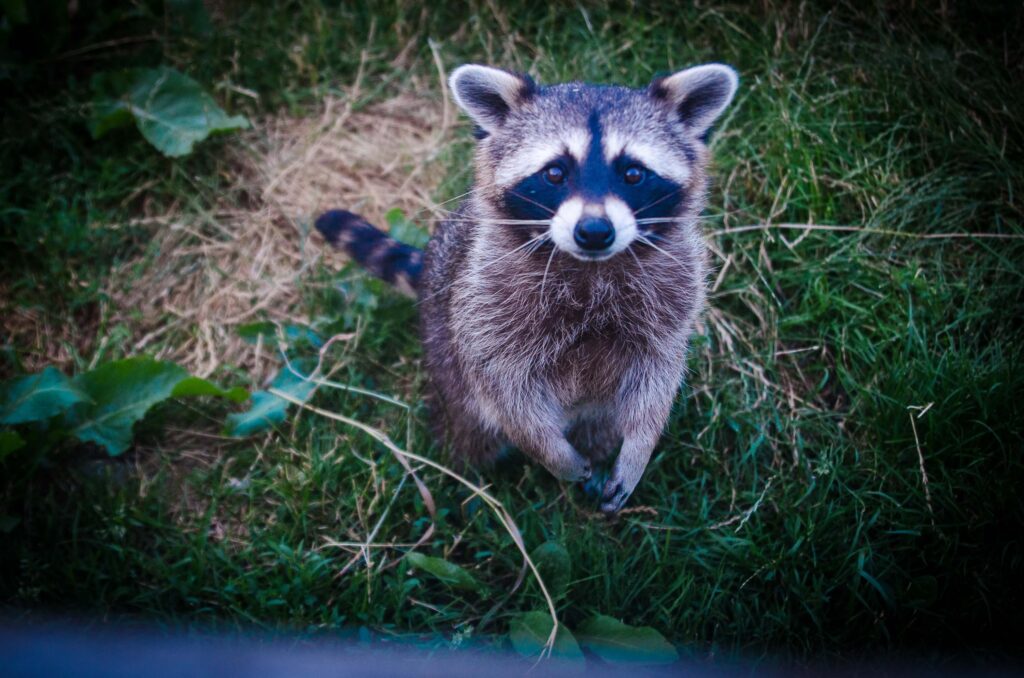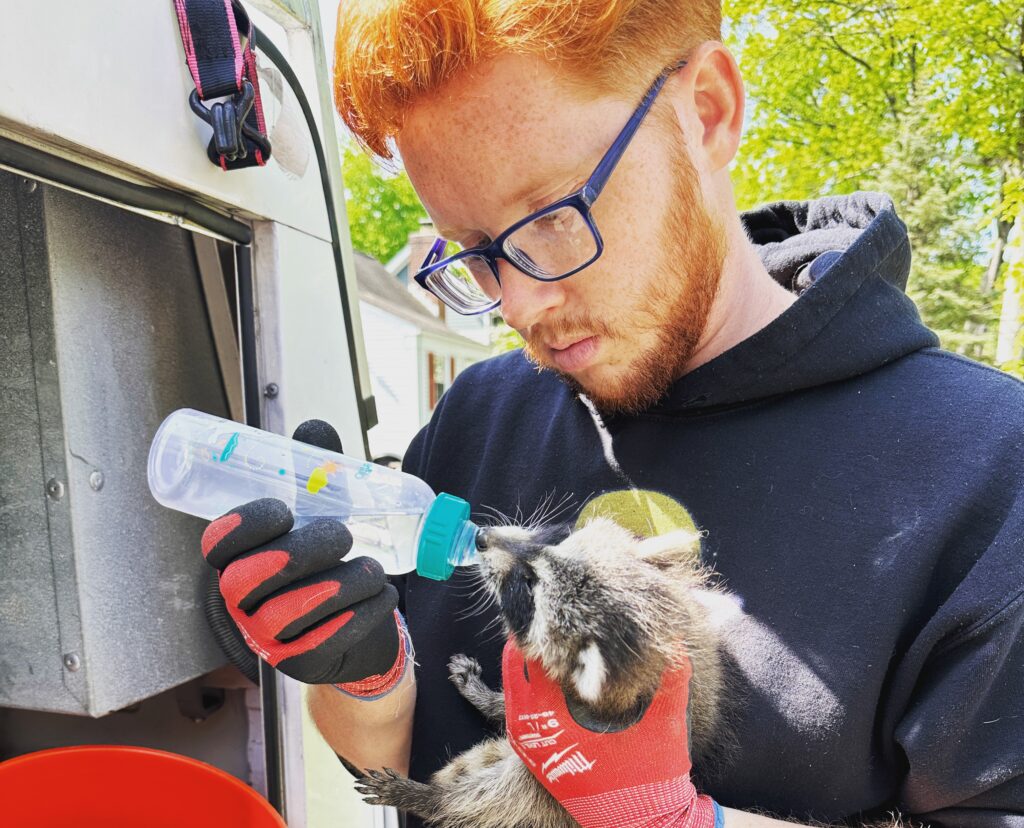In the delicate balance between urbanization and wildlife preservation, the intrusion of raccoons into human habitats has become an increasingly prevalent concern. These highly adaptable and resourceful creatures, while fascinating in their own right, can wreak havoc on homes, gardens, and public spaces. To address this growing challenge, mastering the art of raccoon removal is essential for homeowners, property managers, and communities alike.
The comprehensive guide presented herein delves into the intricacies of raccoon behavior, habitat preferences, and effective removal strategies. As urban areas expand, raccoons have adeptly navigated the human landscape, finding novel niches in which to thrive. Recognizing the signs of their presence and understanding the environmental factors that attract them are crucial components of a successful removal plan.
This guide aims to equip readers with the knowledge and tools necessary to identify raccoon hotspots, from common nesting sites to subtle indicators of their activity. Beyond mere detection, humane trapping techniques and do-it-yourself raccoon-proofing methods will be explored, emphasizing the importance of ethical removal practices and adherence to local wildlife regulations. As the urban ecosystem continues to evolve, this guide advocates for a proactive approach, combining preventative measures with the expertise of wildlife removal professionals when needed.
Through case studies, real-world examples, and practical advice, readers will gain valuable insights into mastering raccoon removal. Whether faced with a current raccoon intrusion or looking to safeguard against future encounters, this comprehensive guide serves as a roadmap to harmonious coexistence between human habitats and the wildlife that shares our spaces.
Key Takeaways
- Identify raccoon hotspots to address potential issues proactively.
- Humane trapping techniques promote ethical removal.
- DIY raccoon-proofing reduces attractions and fortifies your property.
- Professional assistance ensures thorough, legal, and humane removal.
- Prevention and maintenance are crucial for a harmonious coexistence with raccoons.
Understanding Raccoon Behavior
Understanding raccoon behavior is a fundamental aspect of effectively managing and mitigating their presence in urban and suburban environments. Raccoons (Procyon lotor) are highly intelligent and adaptable mammals that have successfully adapted to living alongside humans. To address issues related to raccoon intrusion, it is crucial to delve into their behavior patterns, activity rhythms, and nesting preferences.
Raccoons are primarily nocturnal creatures, meaning they are most active during the night. This behavior serves as an adaptation to avoid human interaction and predators while maximizing their chances of finding food. Their excellent night vision and keen sense of hearing contribute to their success as nocturnal foragers. Understanding this nocturnal behavior is essential for implementing effective removal strategies, as trapping efforts and preventative measures must align with their activity patterns.
Nesting and denning habits vary depending on the availability of suitable habitats. Raccoons exhibit a preference for secluded and protected spaces such as attics, chimneys, crawl spaces, and abandoned structures when living in urban and suburban areas. In more natural settings, they may choose tree hollows or ground burrows. Recognizing these nesting tendencies is crucial for locating and addressing potential raccoon hotspots.
Seasonal variations also play a significant role in raccoon behavior. During spring and early summer, female raccoons seek safe and quiet places to give birth and raise their young, making them more likely to venture into residential areas. Understanding these seasonal shifts in behavior aids in implementing targeted removal strategies and reinforces the importance of proactive measures to secure vulnerable entry points on properties.
In summary, comprehending raccoon behavior is key to successful management. By recognizing their nocturnal habits, nesting preferences, and responses to seasonal changes, individuals can tailor their approach to raccoon removal, ensuring a more harmonious coexistence between humans and these resourceful urban dwellers.
Identifying Raccoon Hotspots
Identifying raccoon hotspots is an essential aspect of effectively managing raccoon populations and mitigating potential conflicts with humans. Raccoons (Procyon lotor) are highly adaptable creatures that have thrived in urban and suburban environments by exploiting various resources and habitats. Understanding where raccoons are likely to be found can help individuals and communities take proactive measures to minimize encounters and prevent damage to property.
One of the most common raccoon hotspots in urban areas is associated with food sources. Raccoons are opportunistic feeders and will readily scavenge for food in garbage bins, compost piles, pet food left outdoors, and even bird feeders. Trash cans and dumpsters are particularly attractive to raccoons due to the abundance of discarded food. Identifying areas with easy access to food waste is crucial for determining potential raccoon hotspots.
Another key hotspot for raccoons is nesting sites. Raccoons seek out sheltered locations to build dens for breeding and raising their young. Common nesting sites include attics, crawl spaces, chimneys, and sheds. These areas provide raccoons with protection from predators and the elements, making them ideal locations for establishing dens. Signs of raccoon nesting, such as claw marks, droppings, and torn insulation, can help identify potential hotspot areas.
Environmental factors also play a significant role in determining raccoon hotspots. Raccoons are attracted to areas with abundant food, water, and shelter. Wooded areas, parks, and green spaces provide raccoons with natural habitats and foraging opportunities. Additionally, proximity to water sources, such as rivers, ponds, and streams, can increase the likelihood of raccoon activity in an area.
In conclusion, identifying raccoon hotspots involves understanding their behavior and habitat preferences. By recognizing areas with abundant food sources, potential nesting sites, and favorable environmental conditions, individuals can take proactive steps to deter raccoons and minimize potential conflicts. Effective management of raccoon populations requires a combination of prevention, habitat modification, and humane removal strategies.
Raccoon Removal Humane Trapping Techniques
Humane trapping techniques are crucial for managing raccoon populations while minimizing harm to the animals and adhering to ethical considerations. When dealing with raccoon intrusion or the need for relocation, it’s essential to employ methods that prioritize the well-being of these intelligent creatures.
One effective humane trapping method involves the use of live traps. These traps are designed to capture raccoons without causing injury, allowing for their safe removal and release. Live traps typically consist of a cage with a triggering mechanism that closes the door once the raccoon enters to access bait. It’s important to select a trap of an appropriate size to ensure the raccoon is confined comfortably.
Bait selection is a critical aspect of humane trapping. Using food items that appeal to raccoons, such as marshmallows, sweet fruits, or peanut butter, can entice them into the trap. Proper bait placement within the trap encourages the raccoon to engage with the mechanism, triggering the door closure without causing harm.
Once a raccoon is captured, prompt action is necessary to ensure its well-being. Humane trapping emphasizes the release of raccoons in suitable habitats where they can thrive. It is crucial to choose release locations with ample food and water sources, away from human settlements and potential conflicts.
Regular monitoring of traps is essential to minimize stress on captured raccoons. Timely removal and release prevent undue suffering and ensure a humane process. Additionally, checking local wildlife regulations is vital to ensure compliance and responsible trapping practices.
In summary, humane trapping techniques prioritize the ethical treatment of raccoons during the removal process. Live traps, appropriate bait selection, and thoughtful release locations contribute to a humane approach that allows for effective raccoon management while respecting the welfare of these intelligent and adaptable creatures.

DIY Raccoon-Proofing
Protecting your property from raccoon intrusions becomes a practical and necessary endeavor with the implementation of do-it-yourself (DIY) raccoon-proofing strategies. Raccoons, renowned for their ingenuity, can find their way into various areas of your home and property, making it crucial to fortify potential entry points.
Begin by conducting a thorough inspection of your home’s exterior to identify any vulnerable areas. Check for gaps in the roof, broken vents, or uncapped chimneys. Seal these potential entry points using sturdy materials such as mesh wire or hardware cloth, ensuring a snug fit to deter raccoons from gaining access to sheltered spaces like attics or crawl spaces.
Another key aspect of DIY raccoon-proofing involves fortifying your garbage disposal system. Raccoons are adept scavengers attracted to easily accessible food sources. Invest in raccoon-resistant bins with secure, tight-fitting lids to prevent these opportunistic creatures from rummaging through your trash. Alternatively, if you prefer to use your existing bins, consider securing them with bungee cords or other means to thwart raccoon access.
Evaluate your outdoor structures, such as sheds and outbuildings, for any potential hiding spots or vulnerable points. Secure doors and windows, ensuring that raccoons cannot easily pry them open or find their way inside.
By taking these simple yet effective measures, you create a formidable line of defense against raccoon intrusion. DIY raccoon-proofing not only protects your property but also promotes harmonious coexistence, reducing the likelihood of conflicts between humans and these resourceful urban dwellers. Remember, a few preventative steps can go a long way in ensuring a secure and wildlife-friendly environment.
Legal and Ethical Considerations For Raccoon Removal
Navigating the realm of raccoon removal involves not only practical considerations but also a nuanced understanding of legal and ethical aspects. Responsible wildlife management requires adherence to local regulations and ethical guidelines to ensure humane and lawful practices.
Legal Considerations:
Before embarking on any raccoon removal efforts, it is essential to familiarize yourself with local wildlife regulations. Laws governing the trapping, relocation, and handling of raccoons vary by region, and violating these regulations can result in legal consequences. Contact local wildlife authorities or consult online resources to gain a comprehensive understanding of the legal framework governing raccoon removal in your area. Respect for these laws not only avoids potential fines but also contributes to the preservation of a balanced ecosystem.
Ethical Considerations:
Humane treatment of raccoons is a cornerstone of ethical raccoon removal practices. Employing methods that cause unnecessary harm or stress to these creatures goes against ethical wildlife management principles. Humane trapping, prompt release in suitable habitats, and avoiding lethal means whenever possible are essential components of an ethical approach.
Consider the implications of raccoon removal on their young, particularly during breeding seasons. Ethical considerations dictate taking measures to avoid separating mothers from their offspring, ensuring the family structure remains intact during removal and release.
Furthermore, ethical raccoon removal involves transparency and communication with local communities. Educate neighbors about the importance of coexisting with wildlife and share information on responsible removal practices. Building awareness fosters a collective commitment to maintaining a harmonious balance between human habitats and the natural world.
In summary, integrating legal and ethical considerations into raccoon removal practices is crucial for promoting responsible stewardship of wildlife. By aligning removal methods with legal guidelines and ethical standards, individuals contribute to the preservation of biodiversity and the well-being of both humans and raccoons in shared environments.
Raccoon Removal Professional Assistance
When dealing with raccoon removal, the complexity of the task often necessitates the expertise of wildlife removal professionals. Seeking professional assistance is not only a practical choice but also a responsible one, ensuring the humane and effective management of raccoon populations.
Wildlife removal experts possess the knowledge and experience to assess the extent of raccoon infestation accurately. Their training allows them to identify entry points, nesting sites, and potential hotspots that might be overlooked by untrained individuals. This comprehensive understanding enables them to tailor removal strategies to the specific needs of each situation.
Professional raccoon removal services often utilize advanced trapping techniques and equipment designed for safe and humane capture. These experts are adept at handling raccoons with care, minimizing stress to the animals during the removal process. Their familiarity with local wildlife regulations ensures that all actions are in compliance with the law.
Moreover, wildlife removal professionals are equipped to address not only the immediate issue but also its root causes. They can provide valuable insights into property modifications to discourage future raccoon intrusions, such as securing entry points and implementing effective deterrents.
In situations where raccoons have made their way into living spaces or pose immediate threats, wildlife removal experts offer prompt and efficient solutions. Their expertise extends beyond removal to encompass the safe and responsible disposal of captured raccoons, preventing further environmental impact.
By enlisting the services of professionals, individuals contribute to the well-being of both human communities and raccoon populations. Professional assistance ensures that raccoon removal is conducted with the utmost care, expertise, and consideration for ethical and legal standards, fostering a harmonious coexistence between humans and wildlife.
Prevention and Maintenance
Prevention and maintenance are pivotal aspects of managing raccoon populations and minimizing potential conflicts with these highly adaptable creatures. Proactive measures and regular upkeep contribute to creating an environment that is less inviting to raccoons, promoting a harmonious coexistence between humans and wildlife.
Securing Entry Points: One of the fundamental steps in prevention is fortifying potential entry points in your home. Conduct regular inspections, paying attention to areas like the roof, vents, and chimneys. Ensure that all openings are sealed with durable materials, such as mesh wire or hardware cloth, to prevent raccoons from gaining access to attics, crawl spaces, or other sheltered areas.
Garbage Management: Minimize food sources that attract raccoons by managing your garbage effectively. Invest in raccoon-resistant bins with secure lids or secure your existing bins with bungee cords. This simple yet effective measure discourages raccoons from rummaging through your trash, reducing the likelihood of their presence in your vicinity.
Landscaping Modifications: Make strategic modifications to your landscaping to create a less appealing environment for raccoons. Trim overhanging branches that could provide access to your roof or property. Additionally, consider installing motion-activated lights or sprinklers to deter nocturnal raccoons from exploring your yard.
Regular Inspections: Consistent property inspections are crucial for early detection of potential raccoon activity. Regularly check for signs such as droppings, scratches, or damaged structures. Timely identification of these indicators allows for swift intervention, preventing minor issues from escalating into full-blown infestations.
Educating the Community: Promote awareness within your community about the importance of responsible raccoon management. Share information about preventive measures, ethical removal practices, and the significance of coexisting with wildlife. Building a collective commitment to raccoon management fosters a community that actively contributes to the well-being of both residents and raccoons.
In conclusion, a proactive approach to prevention and regular maintenance is key to creating an environment that is less appealing to raccoons. By securing entry points, managing garbage, making landscaping modifications, conducting regular inspections, and fostering community awareness, individuals can play a vital role in minimizing raccoon-related conflicts and preserving a balanced coexistence with urban wildlife.
FAQs
How do I know if I have raccoons on my property?
Look for signs such as paw prints, droppings, damaged structures, and nocturnal noises. If unsure, a professional inspection can help identify raccoon activity.
Are raccoons dangerous to humans?
While raccoons are generally not aggressive, they can become defensive if cornered. It’s essential to avoid direct contact and seek professional assistance for removal.
What should I do if I find a raccoon nest on my property?
Contact wildlife removal experts immediately. Attempting to handle nests without proper knowledge can lead to stress for the raccoons and potential conflicts.
How can I raccoon-proof my home?
Secure potential entry points, use raccoon-resistant bins, and trim overhanging branches. Consulting with professionals for a property assessment is also advisable.
Can raccoons carry diseases?
Yes, raccoons can carry diseases such as rabies and leptospirosis. Avoid direct contact and seek professional assistance for removal.
Conclusion
In conclusion, mastering raccoon removal involves a multifaceted approach that encompasses understanding raccoon behavior, identifying hotspots, and implementing humane and effective removal strategies. By delving into the nuances of these intelligent creatures, individuals can develop a comprehensive plan that addresses both immediate concerns and long-term prevention.
Recognizing the signs of raccoon activity and understanding their habits allows for targeted efforts in identifying and securing potential hotspots. DIY raccoon-proofing measures contribute to creating a fortified environment, minimizing the attractions that draw raccoons to human spaces. Legal and ethical considerations underscore the importance of humane trapping techniques, adherence to local regulations, and responsible removal practices.
While individuals can take proactive measures, the complexity of raccoon management often necessitates the expertise of wildlife removal professionals. Seeking professional assistance ensures a thorough assessment, proper trapping methods, and compliance with legal standards. Furthermore, it facilitates the implementation of preventive strategies tailored to the specific needs of each scenario.
Prevention and maintenance are crucial components of a sustainable raccoon management plan. Securing entry points, managing garbage effectively, and fostering community awareness contribute to an environment that discourages raccoon intrusion and promotes a balanced coexistence.
For those facing raccoon challenges, Kritter Catchers stands ready to provide expert assistance. With our team of skilled professionals and a commitment to ethical and humane practices, we offer comprehensive solutions for raccoon removal and prevention. Call us now at +1-877-468-5748 to speak with our experts and ensure a raccoon-free, harmonious living space. Let’s work together to create a environment where both humans and raccoons can thrive in their respective habitats.


